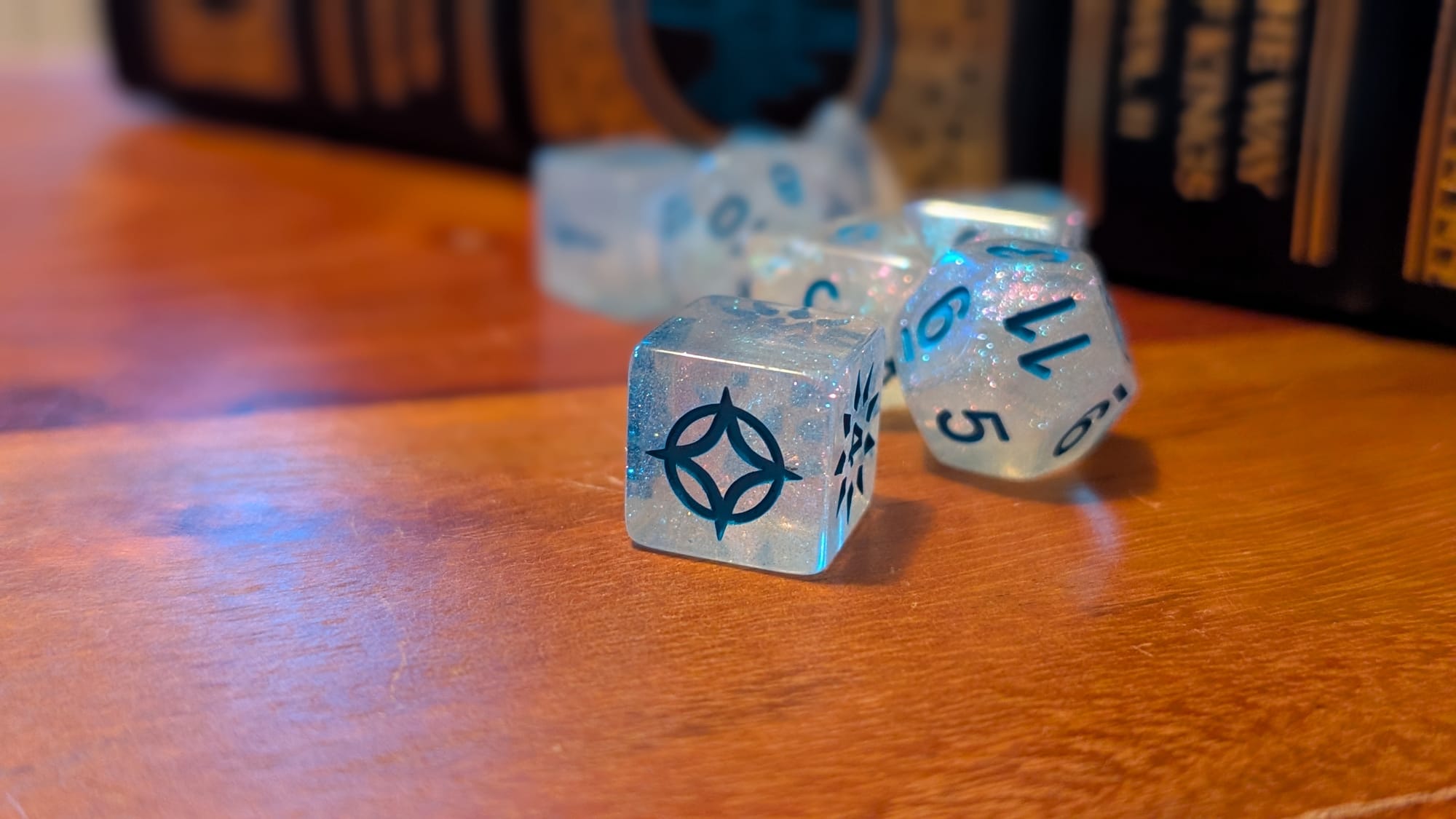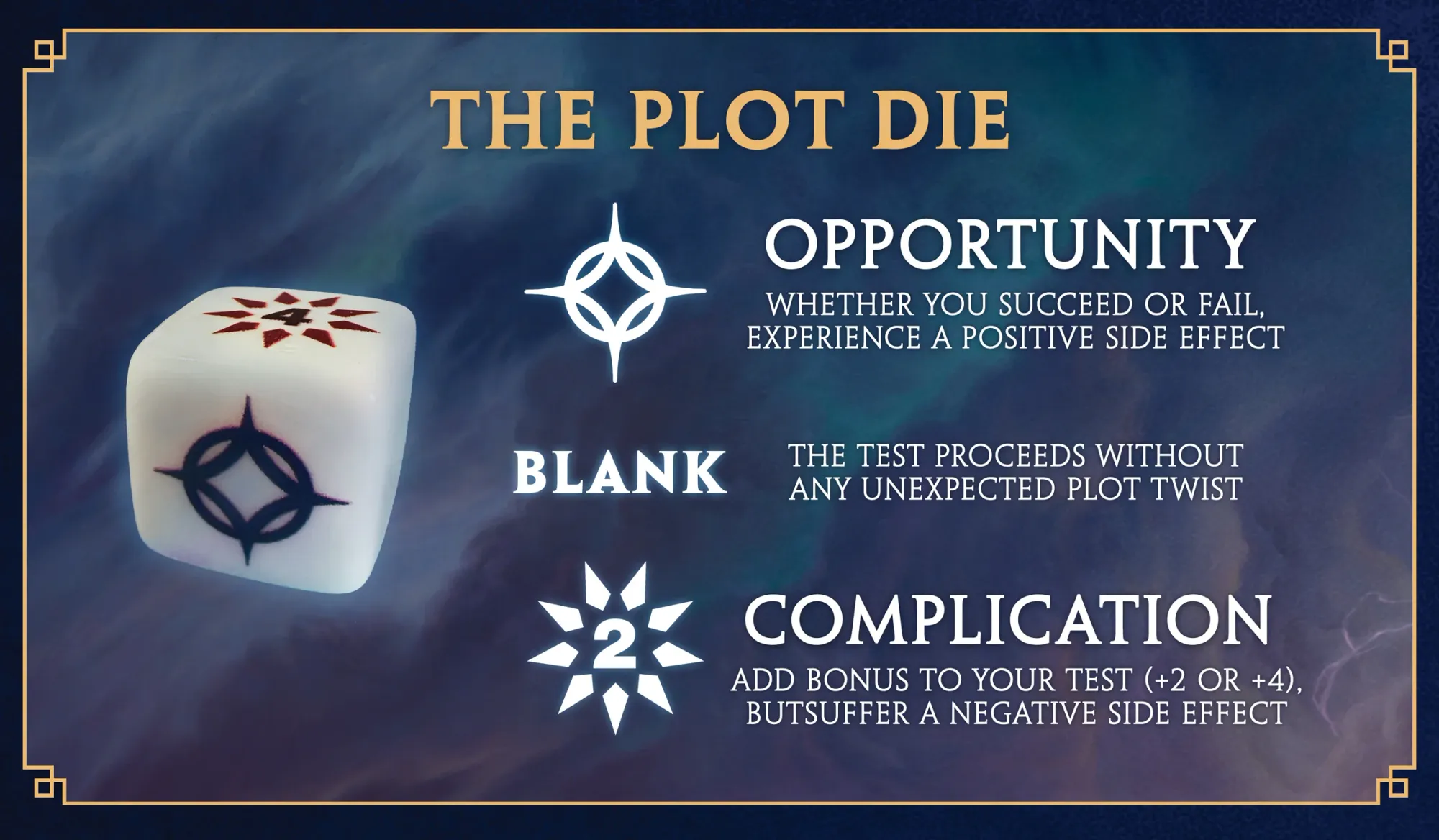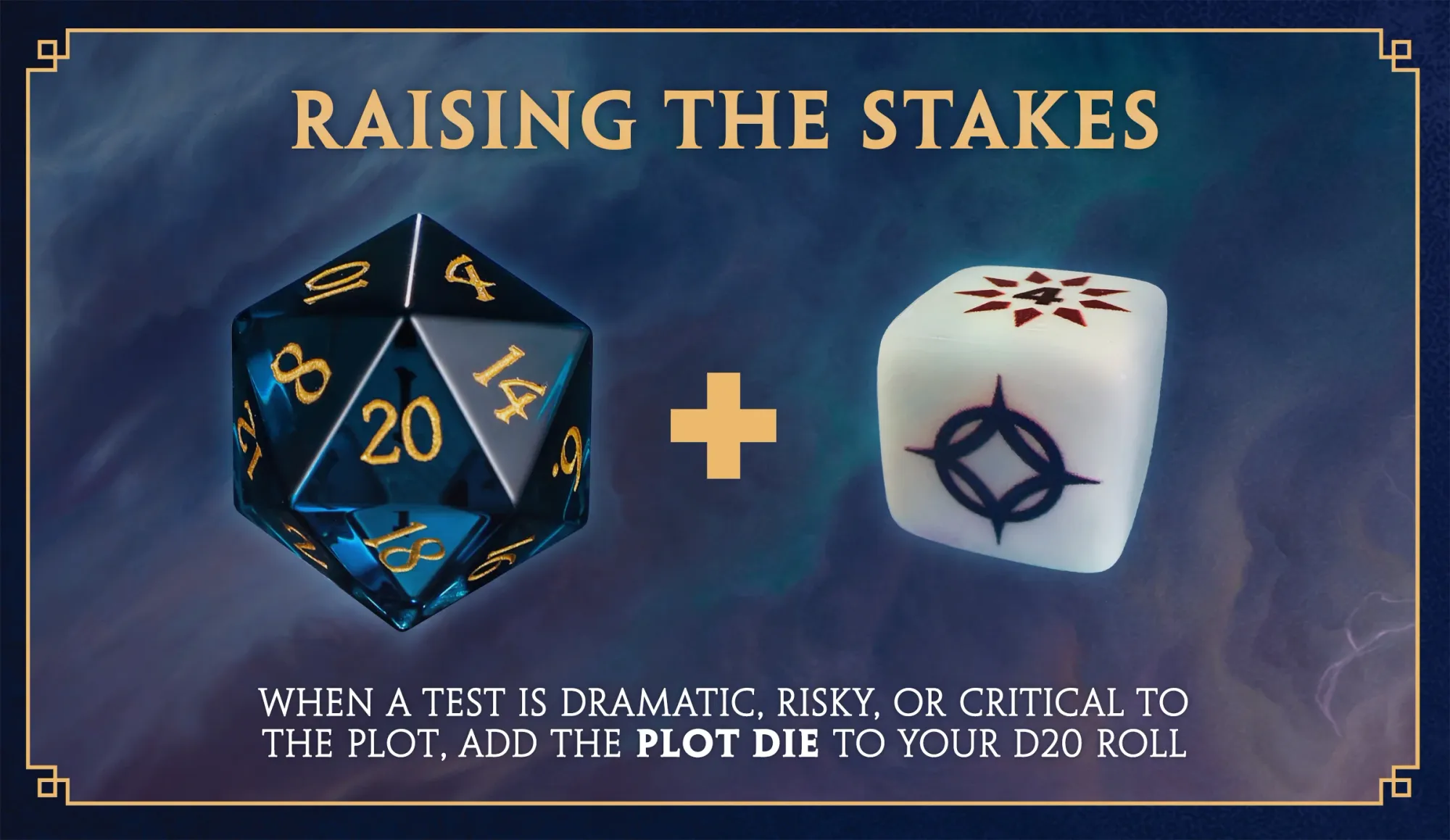How to use the Plot Die in the Cosmere RPG
Those familiar with tabletop role playing games like dungeons and dragons or pathfinder will find familiar ground within the Cosmere RPG, but the plotweaver system has a unique feature that makes it stand out from other systems: the Plot Die.

We finally have a release date for the Cosmere RPG: On July 23rd 2025, we’ll be returning to Roshar for a new adventure set with the Stormlight Archive. New adventuring parties of scholars, warriors, and Radiants will travel across the land, braving storms, adversaries, and other challenges staged to push their ideals to the limit.
Those familiar with tabletop role playing games like Dungeons and Dragons or Pathfinder will find familiar ground within the Cosmere RPG, but the Plotweaver system (Brotherwise’s custom made ruleset) has a unique feature that makes it stand out from other games: the Plot Die.
This article is mostly written for Game Masters running sessions of the Cosmere RPG, but players interested in learning more can do so here as well.
What is the Plot Die

As a mechanic, the Plot Die is meant to be used to add extra consequences and drama to pivotal rolls during gameplay. A 6 sided die, two sides are marked with an “opportunity” symbol, two are marked as “complications” and two are blank.
The die is used in conjunction with another skill test, and adds a modifier to the result of that roll. Landing on the opportunity symbol comes with a beneficial effect, not too dissimilar from a crit in 5th edition Dungeon and Dragons. Landing on a complication gives a negative effect, but comes with the consolation of a bonus to your roll, either a +2 or +4, depending on the face.
Rolling a natural 20 on a skill test automatically applies an opportunity. Rolling a 1 on a skill test automatically applies a complication.
Players may choose the results of their opportunity with some GM guidance, but the GM chooses the results of a complication.
While not strictly in the ruleset, I would advise that GMs allow players to choose the effects of their opportunity after learning the result of their skill test. It’s unsatisfying for a player to choose to max damage via a crit just to find out they missed.
The Plot Die must be rolled with the skill test, and can only be rolled once per test.
Let’s explore opportunities and complications a bit deeper.
Opportunities
Opportunities are the Cosmere RPG’s “nat 20” or critical hit. When earned, the player chooses one of several effects:
- Aid an ally, allowing the player to bestow advantage to another player on their next roll.
- Collect yourself, recovering 1 point of focus, the resource used to take actions.
- Critically hit, which in the Cosmere RPG simply results in the highest damage possible on a dice roll.
- Influence the narrative, which results in a positive action that affects the narrative of the campaign, usually granting information or having an effect on the story.
For those unfamiliar with the concept of advantage / disadvantage, they are statues that affect dice rolls for skill tests. When rolling with advantage, the player rolls their d20 twice, taking the best result. When rolling with disadvantage, the player rolls twice, taking the lesser result. These are rare circumstances of fortune or ill luck.
It’s important to note here that influencing the narrative is intended to be a collaborative effort between the player and GM. The example provided in the beta materials referenced failing to apprehend an agent, but during the struggle managing to pick their pocket, providing you intel.
A prepared GM should go into major encounters where you expect the Plot Die to be cast with narrative effecting opportunities in mind. Players may try to come about information they think will advance the plot in novel ways, so a bit of prep work on the behalf of the GM will make improvising all the easier.
At my table, I will likely go into sessions with specific influencing opportunities in mind, and grant them on the table in addition to the path chosen by the player.
Complications
Complications are the equivalent to crit fails seen in most games. While the result has a negative effect, they do come with a bonus to the skill test, which can be as high as +4. For those familiar with other tabletop RPGs, this is a huge bonus.
When earned, the GM chooses one of several effects:
- Hinder an ally, causing the next player’s actions to have disadvantage.
- Become distracted, or lose 1 focus.
- Influence the narrative, which results in a negative action that affects the narrative of the campaign, usually granting information or having an effect on the story.
Unlike opportunities, the GM always determines which result a complication takes. Again, preparation and improvisation are the best tools in the GM’s kit to help prepare for these types of situations. Preparing for a “what’s the worst that could happen” moment can create unexpected obstacles for your players, and add weight to those critical roles during your sessions.
When is the right time to use the Plot Die

There are three ways the Plot Die can be introduced to a skill test:
- The GM can tell a player to add it to their role at any time.
- Players can request their GM allow them to “raise the stakes” of a roll.
- Some abilities allow for the use of Plot Die.
GMs choosing to use the Plot Die
We come back to the topic of preparation. A major challenge in story-based table management is plot progression. GMs / DMs often try to steer clear of “railroading” plot by forcing their players down a narrow storyline in an attempt to keep the story moving. The prepared GM can use the Plot Die as means of achieving narrative points through player action, without forcing them down a specific path.
Let’s say your goal for the evening’s session is for your players to interact with a specific character in a tavern they’ve found themselves in. Your efforts to nudge them towards the significance of that shady looking Thaylen in the corner of the bar have gone largely unnoticed, and they are instead probing the bartender for information. They attempt to make an Insight check to see if the bartender’s lack of information means that they’re intentionally hiding something, and you ask them to roll a Plot Die alongside the skill test. They fail, but gain an opportunity. As a result, the player gets distracted by the fact the bartender keeps eyeing the Thaylen whenever the player pushes the topic at hand.
It’s a subtle push towards the narrative outcome you were hoping for, but doesn’t negate the intent of the player. If the player had succeeded in the test, they might have gleaned that the bartender seems to be genuinely unaware of what they players are getting at, but it’s the opportunity that allowed you to course correct their actions.
It’s important to understand that your players may not fully see the tapestry you are attempting to weave as a GM. The Plot Die is a mechanic to signal to your players that what they’re doing is significant and empower them to take advantage of the situation.
Players choosing to use the Plot Die
This is a topic worth discussing at your own table. It’s inherently in the player’s best interest to maximize their game play for the best performance possible. As a result, restraining the use of Plot Die can be a difficult thing to balance. Talking about when the appropriate time to use the Plot Die, or even setting a house rule for its use is the best way to stave off player-GM conflict.
Here are two recommendations for house rules:
One a night: Every player has one Plot Die they can spend, at will, each session. They must choose to spend it before rolling, and can’t know the difficulty level unless the GM or a given rule allows it. Players can donate their roll to another if they wish.
Narrative cost: If a player wishes to add a Plot Die, they must come up with a narratively interesting reason for the occurrence. They must explain in detail what happens, adding as much color as they can to convince the GM that the action is badass enough to be of consequence.
Remember that the number one rule of all tabletop RPGs is the rule of cool: if it makes the game more fun and exciting for everyone (GM and players alike), then it should be allowed on the table.
Game Master advice for the Plot Die
I’ll wrap up here with some general advice for GMs looking to work Plot Die into their games.
- Preplan opportunities and complications that will help guide players towards the next step in the narrative.
- Remember that the goal of the system is to create action and drama on the table: don’t simply say “ok you do max damage”, add flair to the descriptions of the actions on the table.
- The Plot Die can be a means of saving a potentially dangerous situation: if someone's going to die, add the die.
- Some of the most interesting applications of opportunities and complications are slow burning. The result doesn’t have to just affect the current test or encounter: maybe the player's actions profoundly affects an NPC who witnesses them and the ramifications last across multiple sessions.
- Consider adding small narrative effects to each roll of the die. Instead of saying “you lose 1 focus” say “you notice the guard you’re fighting is way too confident and is pushing you towards the edge of the chasm where you could easily fall off. As a result, you lose 1 point of focus”
- Don’t feel limited by the rules as written; the result of the roll could knock a player or NPC prone, or disarm them. They could also affect things outside of the players control, like an early Highstorm, or a distracting sound from an unseen location.
- Don’t overuse the system. Allowing players to take too many Plot Die rolls will lessen the intensity when it matters.
One final piece of advice is to remember that, like all mechanics, the Plot Die is there to enhance the game and make it more fun. What ends up working for your group might not be the to-the-letter law of the rulebook, but if everyone’s happy, that’s ok. Let the die then serve as a way to inspire your group and keep them wrapped up in the story.

